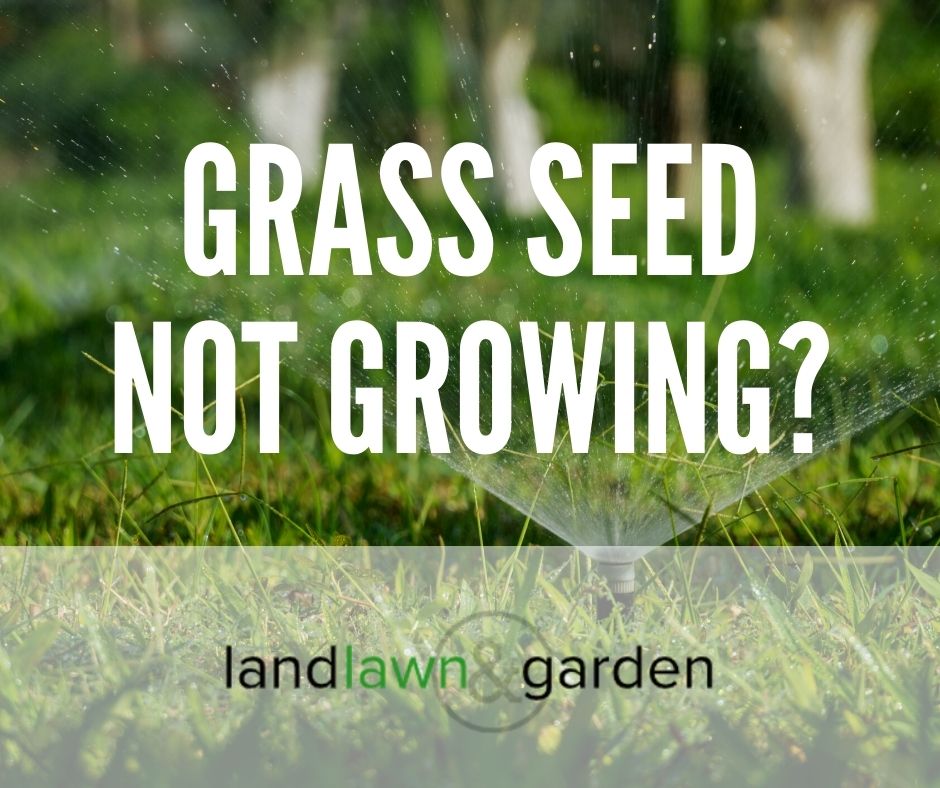When you think of your backyard, what comes to mind? A lush, green oasis with a carpet of soft green lawn? Or a place that you never visit due to the dead grass covered in bare patches and weeds? Restoring your neglected grassy patch back to health is easy with some TLC!
You can walk on grass seed after planting, but you should only do so if absolutely necessary. The seeds will continue to grow, but they could be damaged and produce tender blades of grass with weak roots. Damaged seeds could cause dead spots in your lawn and prolific weed growth.
The most effective way to restore your grassy patch is to plant seed over the bare patches. Before you start any garden project, evaluate your soil and get rid of the weeds! Neglected grass or new lawn projects will benefit from a layer of healthy fertilizer before you sow your seeds. After planting, do you wonder if you can walk over newly planted grass seeds without damaging them? Let’s find out!
Quick Links
Should You Walk On New Grass Seed?
The short answer to this question is, not unless you have to! If you can, close off the area entirely to give the seeds a chance to grow. Seeds can be destroyed or severely damaged if you walk across the area too soon.

New seeds need time to grow, and if they are allowed to grow undisturbed, you will be rewarded for all your hours of hard work with a beautiful, lush, green lawn, so stay off the soil for as long as you can!
Some sources state that you should stay off newly seeded lawns for at least three growing seasons, but if that’s not possible in your situation, at least three months should do the trick!
Generally, you should not walk on newly seeded grass until it has been mowed three or four times, which means that the grass should be at least 3 to 4 inches (7.6 to 10 cms) high after about three months of growth before mowing.
Mowing helps the grass grow, but mowing should not happen until the grass blades are an ideal height for the first mow or 1/3 higher than the intended height of the grass blades. Mow the grass once a week to allow the roots to grow and establish and for the grass to grow thick and strong.
The type of grass you have chosen to plant, the soil, and the weather conditions all play their part in how long you can expect the first blades of grass to push through the soil after you have planted them.
Why Shouldn’t You Walk on New Grass Seed?
Seeds are very delicate and should be left alone to grow at their own pace without the added stresses of foot traffic.
Walking over the seeds while they are trying to grow and establish strong roots could destroy them!
Any heavy weight placed on the ground while the seeds are growing could affect the growth of the roots and stunt the grass. The longer the seeds are left to grow and establish, the stronger the roots will become, and the longer and thicker the blades of grass will grow.
Grass seed germination takes about 30 days, but the grass still needs time for the roots to establish and strengthen after this time.
Even when your grass reaches the ideal height for mowing, take extra special care when mowing as the roots have still not taken hold yet and are particularly fragile at this stage of their development.
If the first mow is too early, the seeds can be ripped up and destroyed by the cutting action of the mower.
When Can You Walk On New Grass Seed?
This depends on the type of new grass seed that you are planting. Grass species germinate at different temperatures in different climates, so take note of the date when the seeds were planted, monitor the growth of the grass blades, and stay off the grass until it is well established – or at least until you have cut it three times!
Walking over new grass seed at the right time determines how well the grass will develop, grow and thrive. Walking over new grass seed at the wrong time could result in patchy grass or bare soil.
There are a few possible instances when you could safely walk over newly planted grass seeds:
- After sowing the new seeds, use a rake is to gently bury the new seeds with soil. Then, use a lightweight empty lawn roller to press the seeds into the soil to maximize germination by eliminating air pockets that could interfere with seed growth. This method also prevents the grass seeds from being washed away during watering and allows the seedbed to retain moisture for longer.
- When you are watering the area. Even so, great care should be taken not to disturb the growing seeds. Tread lightly over the soil, take slow, light steps to avoid damaging seeds, and keep the seeds moist by watering lightly at least three times a day until they germinate and seedlings form. The seeds need regular water to grow, so ensure the soil is moist but not soggy at all times. Water in brief sessions of around 5 – 10 minutes per session to kickstart the grass seed growth.
Follow our handy “timetable guide at a glance” to know when you can walk on new grass seeds after planting:
- New planted fresh seeds, no growth – stay off the soil
- Sprouted grass seed under 3 inches (7.62 cms) tall – stay off the sprouts
- New grass after mowing at 3 inches (7.62 cms) – only walk on the grass when necessary
- New grass mowed 3 – 5 times – walk on the grass and use as normal
Wrapping Up
Planting new seeds or re-seeding a patchy, established area can be expensive and take up a lot of your time. Before you purchase any seeds, do the research and find out what will grow in your area.
An investigatory visit to your local garden center should help you to decide what you need to do before sowing new seeds and how to prepare your soil beforehand. Avoid walking on your newly seeded lawn for as long as possible to give the seeds the time that they need to grow and thrive.
Growing a lush lawn from seed can be hard work, so make sure to prepare the soil first to give your seeds the best chance of survival and grow into a mature, beautiful, green lawn!

Concerned your grass seed isn’t growing?
Click the button below to read our article on some of the most common reasons your grass seed is not growing and what you can do about it. Don’t lose hope just yet!

Kevin is the owner of Land Lawn & Garden. In addition to taking a lot of pride in his lawn at home, he also helps manage the family land. You can find more about him here.

